The pre-history of the Shannon scheme
Published in 18th–19th - Century History, 20th-century / Contemporary History, Features, Issue 4 (Winter 2004), Volume 12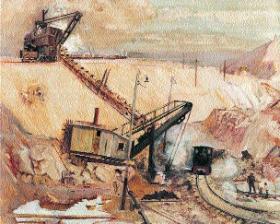
Detail from Wagon Train at Ardnacrusha by Seán Keating. (Electricity Supply Board)
In 1793–4 Anthologia Hibernica published a series of letters by ‘Mentor’ on the philosophy of nature, covering a wide range of mathematical and scientific topics. Letter eighteen in October 1794 dealt with the nature and properties of magnetism. This was followed in November by one on electricity in which ‘Mentor’ described what he called a ‘battery’. It was, in fact, an early generator. The machine illustrated the basic principles of generation, transmission, insulation, storage (battery) and transformation or magnification of the current generated. It pre-dated Nicholas Callan’s self-excited dynamo by 40 years. Callan was professor of Mathematics and Natural Philosophy at Maynooth, where his experiments were conducted between 1826 and 1864. His most significant work was in the construction of induction coils and electromagnets. He developed new batteries and invented an electric motor in 1838. This self-exciting dynamo was further developed by Siemens, who produced a generator in 1866. This major advance led to the realisation that large-scale electrical generation was possible. It fell to another Irishman, Charles Parsons, and his work on steam turbines to turn possibility into reality. Without Parsons’s work the development of modern electric supply systems could not have taken place.
Early uses of electricity in Ireland
Initially the only application for electricity was lighting, and later electro-motive traction. As early as December 1877 arc lamps were used to light a construction site in Dublin. The Guinness brewery was building an extension and the provision of lighting allowed work to proceed on a continuous basis. The first public electric light in Ireland was at Princes Street outside the offices of the Freeman’s Journal in 1880.
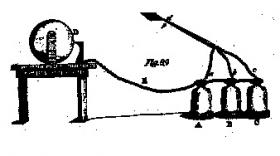
One of the drawings by ‘Mentor’ in Anthologia Hibernica, October 1794, describing an early generator.
In that same year the Dublin Electric Light Company was set up with a paid-up share capital of £15,000. By 1882 the company had three coal-fired generating stations—Schoolhouse Lane, Liffey Street and Fade Street. There were 114 arc lamps on their system and power was supplied to some private customers, such as Pim’s and Jacob’s. In 1881 T.B. Grierson read a paper to the Institution of Civil Engineers of Ireland on ‘Electric lighting by water power’. By 1883 the pioneering hydroelectric station for the Portrush–Bushmills electric tramway was in operation. It is worth noting that their first tramdriver was a woman, Miss Jeannie Richardson. The Newry–Bessbrook electric tramway, also hydro-powered, opened in 1885.
Prior to 1882 both municipalities and private individuals had to seek parliamentary powers if they wanted to lay underground cables. Sponsored by Joseph Chamberlain, the first Electric Lighting Act was passed in 1882. It had a strong bias towards municipal control of all undertakings affecting public interest. It limited the private enterprise concession to supply electricity to 21 years under provisional order of the Board of Trade or to seven years if licensed by local authorities. After 21 years’ operation the local authority could acquire the electrical undertaking by compulsory purchase. Owing to the restrictive nature of the act, few companies were set up and a significant number failed. The restrictions were greatly eased in the 1888 act and there followed a rapid growth in electricity supply schemes.
Developments in electrical schemes 1880–1925
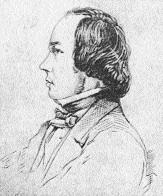
In 1844 Robert Kane put forward the proposal that the lower Shannon should become the industrial heartland of Ireland because of the abundance of hydropower available between Killaloe and Limerick. (Dublin University Magazine, May 1849)
The Dublin Electric Light Company went into liquidation and was acquired by the Alliance Gas Company, which applied for a provisional order under the 1882 act but was opposed by Dublin Corporation, who were intent on setting up their own supply company. Alliance was given a licence to continue but not expand the business of the electrical undertaking. Dublin Corporation obtained a provisional order under the 1888 act and their coal-fired station at Fleet Street was in operation by 1893. Following complaints about noise and vibration, the plant was temporarily closed until the problems could be rectified. In 1903 the Corporation opened a larger generating station at the Pigeon House. In 1908 they opposed a bill to authorise a peat-powered station on the Bog of Allen as its promoters wished to supply the Dublin market. A clause was inserted into the bill making the Corporation totally responsible for supplying power to Dublin.
Outside of Dublin, various towns and locations were also getting involved in electrification. Carlow had a hydroelectric scheme, which was switched on during an electioneering visit by Charles Stuart Parnell in 1891. Bray’s scheme commenced in the same year, whilst Larne and Killarney had their undertakings up and running by 1892. Derry Corporation opened a coal-fired station to provide for street lighting in 1892. Belfast Corporation owned the gasworks but, unable to extend them, decided to introduce electric street lighting. It installed gas-fuelled generating equipment, financed by a £50,000 loan from their gas undertaking. The Perry family opened their hydro station at Newtown-smyth in Galway in 1897. This was later extended with the installation of a coal-fired generator and large plate batteries.
By 1922 there were 130 public electric supply schemes in Ireland. There were also a number of private undertakings, such as Kylemore estate in Connemara, where Mitchell Henry installed a pelton wheel generator for his estate in 1893. When the Benedictine community set up their abbey here they continued to generate their own electricity for many years. A cousin of Thomas McLaughlin maintained that he was inspired to consider water power as his source for the electrification of the Irish Free State whilst sheltering in a convent in Connemara during a thunderstorm. Could it be that Kylemore has inspired more than photographers?
Wind power was also harnessed. The enterprising railway station-master at Fahan, Co. Donegal, built his own wind charger in 1885. His station would appear to have been the first in these islands to be electrified. So by 1925 hydro, coal, peat, gas and wind power were all being utilised to generate electricity.
Early proposals for the development of the Shannon
At a lecture in Dublin in 1844 Robert Kane put forward the proposal that the lower Shannon should become the industrial heartland of Ireland because of the abundance of hydropower available between Killaloe and Limerick. In that same year he published Industrial resources of Ireland, in which he assessed the available hydropower of the lower Shannon at 350 horsepower per foot of fall. As the river falls through 97 feet between Killaloe and Limerick, his estimate of the total power available from the river was 33,950 horsepower (25,300KW). The catastrophe of the Great Famine pushed Kane’s work into the background and no serious scientific consideration seems to have been given to his ideas on hydropower. In 1875, during a miners’ strike in England, an anonymous article appeared in The Engineer entitled ‘Water in aid of steam power’, claiming that 14,000 horsepower (10,500KW) could be generated if less than half the fall in the river between Killaloe and Limerick was harnessed. It further advocated that English industrialists should consider relocating to the region if they considered themselves too heavily dependent on coal as a power source.
In 1901 a private bill, the Shannon Water and Electric Power Act, proposed diverting water from the Shannon into a headrace canal to a location near Doonass, where a single abrupt fall could be created. A power station was to be constructed at this point and the spent water was to be conveyed back to the Shannon by a tailrace. Fishery interests had opposed the bill at committee stage and as a result restrictions were placed on the amount of water that could be drawn from the river to feed the power station. The quantity of water reserved for the river channel was to vary according to the seasons. This in effect killed the scheme as it meant that an auxiliary coal-fired station would have to be built alongside the hydro station. In 1902 F.J. Dick proposed building a hydro station in the riverbed to harness the abrupt drop of 17 feet at the Doonass Falls. Dick based his design on his own calculations of the river flow at Killaloe over the preceding 25 years. Another proposal was to harness Lough Derg as a gigantic storage reservoir by raising the weir at Killaloe by from four to five feet and building a power station there. However, the problems of consequential flooding did not appear to have been considered and the proposals came to naught. Seán Wall, commander of the IRA’s East Limerick brigade, was elected chairman of Limerick County Council in 1920. He insisted that the council carry out a survey of the river to see whether its waterpower potential could be realised. He was killed in action at Annacarty in May 1921 and the survey proposals were abandoned.
Investigations into the Shannon
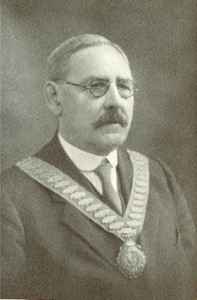
McLaughlin was influenced by F.S. Rishworth, professor of Civil Engineering at University College Galway, to study the possibility of harnessing the Shannon. (Lafayette)
Aside from Wall’s abortive survey and F.J. Dick’s calculations on river flow at Killaloe, two major investigations into the river’s potential were carried out. During the First World War coal, along with many other essentials, was rationed. The British Board of Trade set up a committee to investigate the waterpower resources of Britain. A separate subcommittee under the chairmanship of Sir John Pursar Griffith enquired into the situation in Ireland and came down in favour of a proposal made in 1905 by Theodore Stevens to harness the Shannon.
Stevens proposed the erection of four power stations in the riverbed at selected locations between Killaloe and Limerick. The benefit of this plan, it was argued, was that the river could be harnessed in stages, thus spreading the costs over a period of years. The drawback was that electrification of the country could only take place on a piecemeal basis. The Stevens proposal was costed at slightly in excess of £2.6 million. The first Dáil set up its own committee to investigate the waterpower resources of Ireland under the chairmanship of Hugh Ryan. The report, published in January 1922, gave a summary of Stevens’s proposal but did not endorse it. The committee’s conclusion was that ‘any scheme for the development of the Shannon will depend mainly on the storage which can be got, and consequently the cost of that storage’. This articulates clearly the problem to be overcome if the Shannon was to be harnessed. Storage of water by reservoirs or maintaining a specific level of water within the lakes on the river system was essential if the flow of water was to be regulated. For a hydroelectric station to work continuously and efficiently a controlled and regular supply of feed water is essential, hence the need to establish the storage requirements. The storage requirements for a possible Shannon scheme could not be established without detailed and accurate records of flow measurement for the river. With the publication of John Chaloner Smith’s paper on the average volume of flow from large catchment areas in Ireland in 1921 this major lacuna was filled. The way was now clear for someone to design a workable Shannon hydroelectric scheme.
Thomas J. McLaughlin
Thomas J. McLaughlin was born in Drogheda in 1896. Educated at the Christian Brothers’ school in Syne Street and at University College Dublin, he was very competitive as a student and had little interest in non-academic pursuits. Accounts of his political views vary from ‘intensely nationalistic’ to being ‘in sympathy with Sinn Féin in a detached sort of way’. He did make friends with a number of fellow students at college and in particular with Patrick McGilligan, who later, at a crucial time in the saga of the Shannon scheme, became minister for industry and commerce in the Free State government.
After graduating with a BSc and MSc, McLaughlin obtained a position as assistant lecturer in the Physics Department at University College Galway, where he lectured to engineering students and undertook a course of study leading to a BE (Electrical) and eventually a doctorate. The general consensus amongst Galway engineering graduates was that McLaughlin was influenced by F.S. Rishworth, professor of Civil Engineering, to study the possibility of harnessing the Shannon. C.S. Andrews was definite about this and further suggested that McLaughlin’s pursuit of an engineering degree was a direct result of Rishworth’s influence. Rishworth himself was content to claim that his only involvement with the design of the Shannon scheme was to have sent a copy of Chaloner Smith’s paper on river flows to ‘an eminent engineer in Germany’.
Siemens
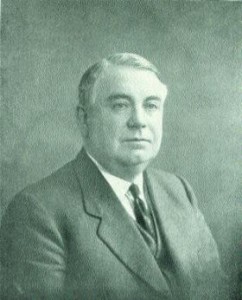
Thomas A. McLaughlin—the driving force behind the Shannon scheme. (Lafayette)
McLaughlin commenced working for Siemens in Berlin in December 1922. By then he had already begun studying the various reports on Irish natural resources. At that time Siemens was busy developing German hydropower sites. Most of that country’s coal-producing areas had been under French control since 1918. As well as having some involvement with this, McLaughlin was given ample time to study the problems of large-scale regional electrification, particularly in relation to the German state of Pomerania. It is difficult to imagine any company in a post-war economic climate paying a highly qualified engineer to act as a decoration. Siemens obviously viewed Ireland as a possible source of new business and much-needed foreign exchange. Newly independent and poorly developed, the Free State must have appeared ripe for new business to a company that badly needed foreign markets. No doubt Siemens also knew of McLaughlin’s investigations into Ireland’s waterpower resources. They may well have known of his friendship, from his student days, with several members of the Free State cabinet.
Chaloner Smith’s paper was the key that unlocked the door for McLaughlin and Siemens in relation to designing a hydroelectric scheme for the Shannon. The results of 25 years of measurements of the flow of water over the weir at Killaloe were tabulated and analysed. Because of the huge variation in flow, Smith reckoned that the ‘great Shannon myth’ (i.e. the large-scale harnessing of the river for power generation) was not an economic possibility. He based his conclusion on the restrictions built into the 1901 act to satisfy the fishery interests. Smith was a drainage engineer and any form of restriction, such as a mill weir, that would impede the quick discharge of floodwaters was anathema to him. His concluding remarks reflect his professional views from the limitations of his sectoral interest. He believed that ‘the best use that Ireland can put her surplus water to is to get rid of it as quickly as possible by the development, restoration and extension of her arterial drainage systems’.
Despite Smith’s pessimistic views, McLaughlin realised that the ratio of highest to lowest flows recorded for the Shannon was well within the range for which storage and regulation were economically possible. He also discovered that he could obtain much greater power from the river than anyone else had considered possible. This vindicated his decision to concentrate on the Shannon as the power source for a national electrification scheme rather than the Liffey, which could only have powered a regional plan. At this period regional electrification schemes were the norm. However, McLaughlin was looking to a national scheme, which had never been attempted before.
McLaughlin had obviously carried out a considerable amount of work on his plans before coming home on holidays in late 1923. He met his old friend and correspondent Patrick McGilligan in London in November 1923. McGilligan was enthusiastic about the proposal and immediately set about persuading others of its merits. A meeting was arranged with W.T. Cosgrove for 28 December. Armed with plans and an outline of his proposals, McLaughlin suffered a setback. Cosgrove turned down the idea but did agree to a subsequent meeting so that it could be reconsidered. This second meeting took place on 26 January 1924. McLaughlin was accompanied by Herr Wallam, a senior director of Siemens. They were given permission to develop their proposals for the electrification of the Free State. The fact that they had their proposals completed in detail, with costings of the project, by 1 September 1924 is indicative of the very large amount of preparatory work that had been completed prior to McLaughlin’s first meeting with Cosgrove. The plans and costings had to be submitted to an international committee of experts, whose findings were to be binding. It is a measure of McLaughlin’s standing with Siemens that the company agreed to bear all their own costs if the proposal was turned down.
Opposition
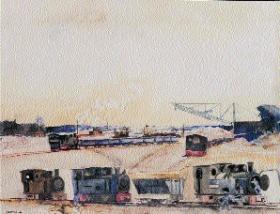
Detail from Railway Yard at Ardnacrusha by Seán Keating. (Electricity Supply Board)
When the government published details of the 26 January meeting protests began, intensifying after the international committee of experts submitted its report on the proposal, subsequently published as a government white paper. Whilst the Institution of Civil Engineers objected to the method of selecting Siemens it did not, per se, object to the scheme itself. However, the Irish Centre for Electrical Engineers did, as its membership was drawn from those engineers working for the many local electricity concerns around the country. The proprietors of these undertakings, along with their allies, the coal-importers and merchants, orchestrated a campaign of opposition through various chambers of commerce. Sir John Pursar Griffith, a leading engineer who had invested heavily in preparing a proposal to develop the hydropower of the Liffey, objected vigorously and published two pamphlets attacking the scheme. Laurence J. Kettle, the chief electrical engineer for Dublin Corporation, also condemned the scheme. He too had designs on a hydro scheme for the Liffey to augment the Corporation’s coal-fired station at Pigeon House. Not to be outdone, the Dublin United Tramways had their own proposals for the Liffey (the Liffey now has three hydro stations, all built by the ESB).
Kettle came up with an interesting proposition in light of recent developments in the ESB. He proposed that the scheme be limited to generation and grid distribution only; electricity would then be sold on to the various local undertakings. This, of course, would have copper-fastened Dublin Corporation’s grip on the capital’s supply system and was rejected. Kettle’s idea finds an echo in Mary O’Rourke’s division of the ESB into two bodies, one for generating, the other for grid distribution. Interestingly, the various gas companies did not mount a cohesive campaign against the proposal. They had, of course, faced competition from local electric companies for the supply of lighting for many years. Possibly they did not view the national electrification plan as a major threat since people would still rely on gas for cooking.
During the Dáil debates it was hinted that financial institutions were going to be reluctant to invest in the scheme. McGilligan had at least one offer from a foreign investment house and so had no worries on this score. It would appear that the necessary finances were put in place over a civilised cup of tea in Cruise’s Hotel, Limerick. Neither Joseph Brennan nor J.J. McElligott, the two most senior officials in the Department of Finance, were aware of the government’s commitment to the Shannon scheme and their ministers’ approval of this. When they found out, they were, naturally, furious.
The Shannon Electricity Bill was introduced in the Dáil on 1 May 1925 and after acrimonious debate was passed on 25 June. On 13 August the contract with Siemens was signed, and work began on the Shannon scheme immediately thereafter.
Epilogue
The Shannon scheme was officially opened by W.T. Cosgrove on 29 July 1929, over 75 years ago, and was generating electricity by October. It was completed on time, with an overrun of £150,000 on the initial contract price of £5.2 million. The Electricity Supply Board (ESB) was set up, by statute, in 1927 in the face of major opposition to ‘creeping socialism by the back door’. Its remit was to take over and run the state’s electricity supply. It is doubtful whether the Shannon scheme would ever have been built had McGilligan tried to introduce his national electrical authority first.
Paul Duffy is a Chartered Fellow of the Institution of Engineers of Ireland.
Further reading:
P. Duffy, Ardnacrusha—birthplace of the E.S.B. (Dublin, 1990).
M. Manning and M. McDowell, Electricity supply in Ireland—the history of the E.S.B. (Dublin, 1984).
G. O’Beirne, Siemens in Ireland 1925–2000 (Dublin, 2000).
















